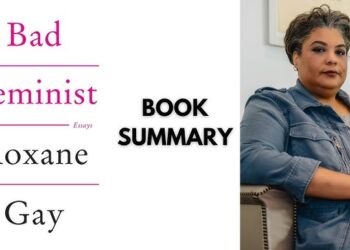Other Ways to Wear a Body Essay by Megan Milks
Other Ways to Wear a Body Essay by Megan Milks-In Megan Milks’ “Other Ways to Wear a Body,” readers are invited to embark on a profound journey exploring the intricacies of embodiment and identity. Through a series of essays, Milks delves into the multifaceted nature of the body, challenging conventional understandings and offering fresh perspectives on corporeal existence. This essay aims to provide a comprehensive summary and analysis of “Other Ways to Wear a Body,” shedding light on its central themes, captivating prose, and the profound insights it provides into the complexities of the human experience.
Exploration of Embodied Experiences: At its core, “Other Ways to Wear a Body” delves into the rich tapestry of embodied experiences, examining how bodies are shaped, perceived, and navigated in contemporary society. Milks invites readers to reconsider their understandings of selfhood and corporeal identity, exploring the myriad ways in which bodies intersect with social, cultural, and technological landscapes.
Also Read-
- A Formal Feeling Comes Essay by Jamie Hood
- A Paradise With No Country Essay Summary
- I Wanted the Impossible by Heather Clark
Interrogation of Gender and Sexuality: The collection undertakes a critical examination of traditional notions of gender and sexuality, challenging binary constructs and embracing the fluidity of identity. Through personal narratives and incisive analysis, Milks dismantles societal norms surrounding gender and sexual orientation, advocating for a more expansive and inclusive understanding of human diversity.
Representation and Visibility: “Other Ways to Wear a Body” confronts issues of representation and visibility, particularly within marginalized communities. Milks explores how bodies are depicted and perceived in various media forms, interrogating the implications of these representations on individual and collective identities. The collection calls attention to the importance of diverse and authentic portrayals of bodies, amplifying voices that have historically been marginalized or silenced.
Technology’s Influence on Embodiment: Central to the narrative is an exploration of the intersection between technology and embodiment, examining how digital advancements shape our perceptions and experiences of the body. Milks scrutinizes the impact of social media, virtual reality, and medical interventions on the construction of identity and bodily autonomy, raising questions about agency, consent, and the commodification of the self.
Trauma, Healing, and Resilience: “Other Ways to Wear a Body” delves into themes of trauma, healing, and resilience, particularly in the context of gender-based violence and systemic oppression. Milks offers poignant reflections on the embodied manifestations of trauma and the paths to reclaiming agency and empowerment in the face of adversity.
Intersectionality and Social Justice: The collection foregrounds intersectional perspectives, recognizing the complex interplay of race, class, gender, and sexuality in shaping individual experiences of embodiment. Milks underscores the importance of centering marginalized voices in discussions of social justice, advocating for solidarity and collective action to dismantle systems of oppression and inequality.
Other Ways to Wear a Body Themes
- Embodiment and Identity: Within “Other Ways to Wear a Body,” the collection dives into the intricate relationship between embodiment and identity. It delves into how individuals experience, perceive, and define their bodies, challenging normative understandings of selfhood across various dimensions such as gender, sexuality, race, and ability.
- Fluidity and Complexity: Embracing the fluidity and complexity of human experiences, the collection rejects fixed categorizations and binaries. Through personal narratives and cultural analyses, it celebrates the diversity of embodied identities, advocating for a more inclusive and expansive view of humanity that recognizes the multiplicity of individual expressions.
- Representation and Visibility: Addressing the issue of representation and visibility, “Other Ways to Wear a Body” interrogates the ways in which bodies are portrayed and perceived in media and popular culture. It emphasizes the importance of authentic and diverse representations to challenge stereotypes and ensure the visibility of marginalized voices.
- Technology’s Influence on the Body: A central theme explored in the collection is the impact of technology on embodiment. It examines how digital advancements shape perceptions of identity, autonomy, and commodification, prompting discussions on agency, consent, and the ethical implications of technological interventions.
- Trauma, Healing, and Resilience: Themes of trauma, healing, and resilience are sensitively addressed within the context of gender-based violence and systemic oppression. Through introspective reflections, the collection explores the embodied manifestations of trauma and the pathways to reclaiming agency and empowerment in the face of adversity.
- Intersectionality and Social Justice: “Other Ways to Wear a Body” foregrounds intersectional perspectives, recognizing the interplay of various forms of oppression and privilege. It advocates for centering marginalized voices in conversations surrounding social justice, calling for collective action to dismantle systemic inequities and foster a more inclusive society.
Conclusion:
In “Other Ways to Wear a Body,” Megan Milks invites readers on a captivating journey through the complexities of embodiment, identity, and social justice. Through a rich tapestry of essays, Milks challenges conventional understandings of the body and advocates for a more inclusive and expansive view of human diversity. The collection celebrates the fluidity and complexity of embodied experiences while confronting issues of representation, trauma, and systemic oppression.
As readers navigate the intricacies of the text, they are prompted to reconsider their own perceptions of selfhood and engage with broader conversations surrounding social justice and intersectionality. Ultimately, “Other Ways to Wear a Body” serves as a powerful testament to the resilience and agency of marginalized communities, urging readers to embrace the full spectrum of human diversity and work towards a more equitable and inclusive world.
FAQs
1. What inspired Megan Milks to write “Other Ways to Wear a Body”?
Megan Milks’ inspiration for “Other Ways to Wear a Body” likely stemmed from a desire to explore the complexities of embodiment and identity within contemporary society. Drawing from personal experiences, cultural observations, and academic insights, Milks crafted a collection that challenges normative understandings of the body and celebrates diverse forms of self-expression.
2. How does “Other Ways to Wear a Body” contribute to ongoing conversations about social justice and identity?
“Other Ways to Wear a Body” contributes to ongoing conversations about social justice and identity by foregrounding intersectional perspectives and amplifying marginalized voices. Through its exploration of themes such as representation, trauma, and resilience, the collection prompts readers to critically engage with issues of systemic oppression and work towards creating a more just and inclusive society.
3. What can readers expect to gain from reading “Other Ways to Wear a Body”?
Readers can expect to gain a deeper understanding of embodiment, identity, and social justice from reading “Other Ways to Wear a Body.” The collection offers nuanced insights into the complexities of human experience, challenging readers to reconsider their perceptions of selfhood and engage in meaningful conversations about inclusivity and equity.
4. How does “Other Ways to Wear a Body” challenge traditional notions of the body and identity?
“Other Ways to Wear a Body” challenges traditional notions of the body and identity by embracing fluidity, complexity, and diversity. Through its exploration of embodied experiences across various dimensions such as gender, sexuality, race, and ability, the collection disrupts fixed categorizations and celebrates the multiplicity of human expression.

















